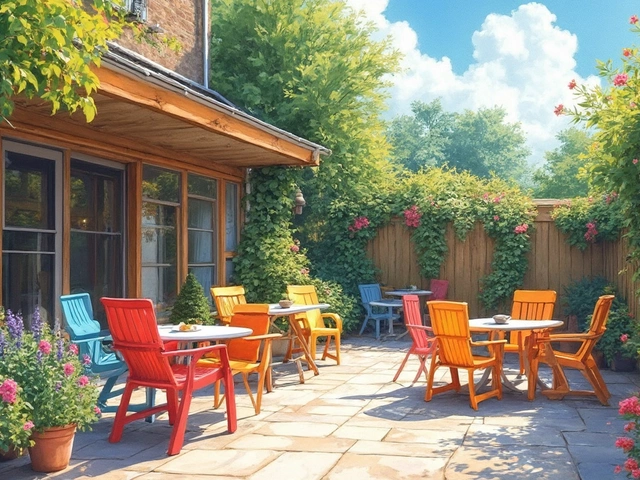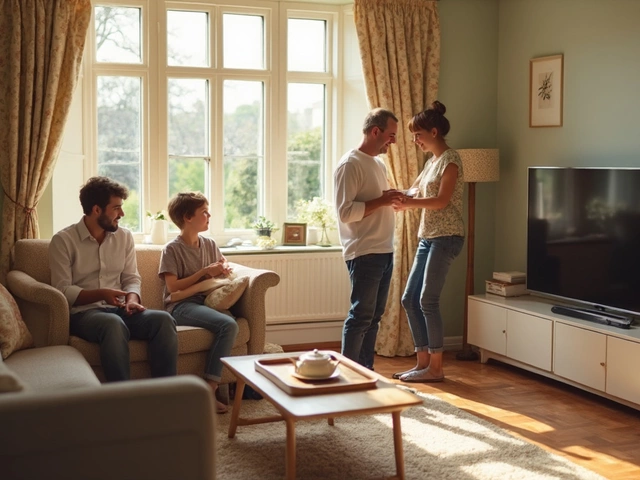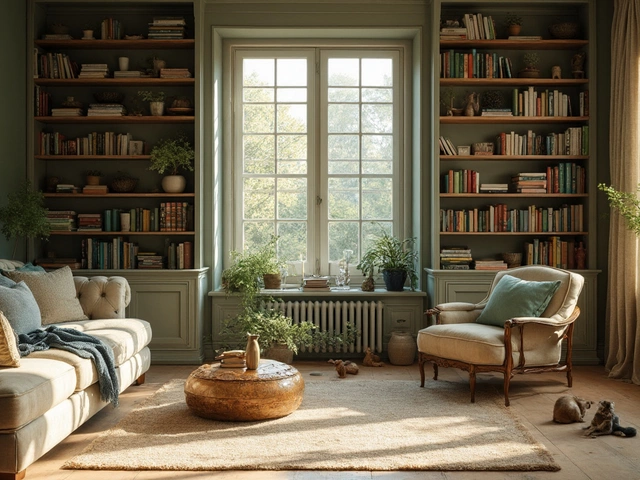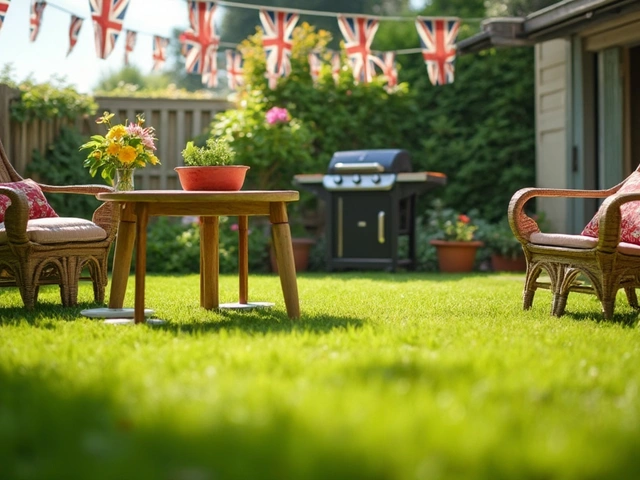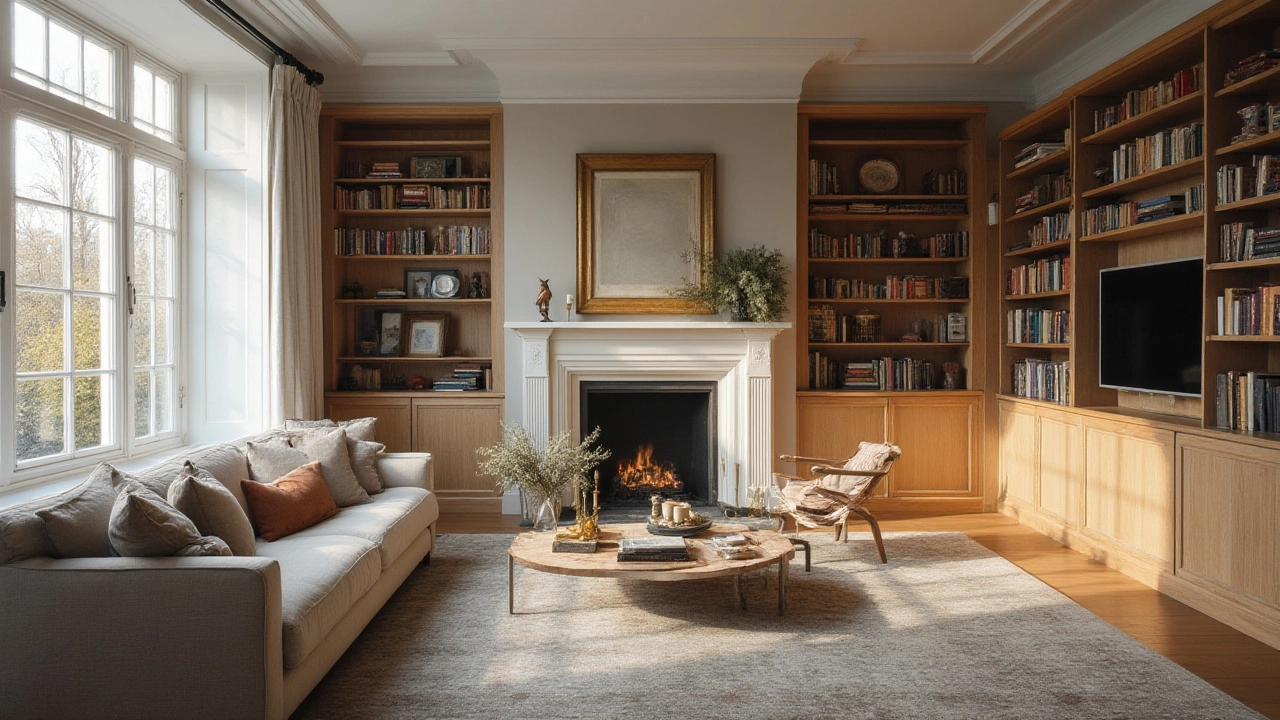 5
Jul,2025
5
Jul,2025
Imagine walking into a home and spotting a wall lined with sturdy, beautiful built-in bookcases. It's hard not to picture your favorite reads, family photos, or maybe a few hidden snacks neatly tucked away. Built-in bookcases have this way of grabbing attention, making a place feel finished and a bit more special. But beyond looking good, can they actually help when it’s time to put that ‘For Sale’ sign out front?
The Appeal of Built-In Bookcases
Ask almost anyone who loves a good story—they’ll swoon over a room lined with bookcases. But there’s more to it. Built-in bookcases instantly give a space a custom look, something not everyone else on the block can claim. Real estate pros say buyers notice these features right away because they turn a generic room into something unique and cozy. In a 2019 Houzz survey, 43% of homeowners said ample storage is one of the biggest factors that makes them fall in love with a house. Bookcases aren’t just about stashing novels—they’re places for stowing games, art, and gear. If you’ve ever had a blank living room wall, you know how easy it is for the space to feel cold or boring. A set of shelves can change that fast.
The versatility is a game-changer. Built-ins can work in almost any room, whether it’s living rooms, home offices, bedrooms, or even wide hallways. What really sets them apart is the permanence—a fitted, painted bookcase looks like it was always meant to be there, matching trim, floors, and sometimes even molding. Designers often say these fixed features add character and a sense of craftsmanship, something mass-produced freestanding furniture just doesn't bring. It’s these little details that make a home memorable.
Many buyers find built-ins appealing because they help keep clutter at bay. Nothing feels more welcoming than a tidy, organized space, and bookcases let you do just that. Want to show off some trophies, keep your board games handy, or give your movie collection a real home? That’s what shelves are for. You don’t have to be a bookworm to see their charm. Plus, buyers love that built-ins feel like an ‘extra’ they don’t have to build themselves or buy after moving in, which means one less job to worry about.
Boosting Home Value: What the Data Shows
This is where things get interesting—does adding built-in bookcases put extra cash in your pocket when you sell? There’s a long-held belief that custom storage features make a home sell faster, and in many cases, it's not wrong. According to Zillow’s 2023 Consumer Housing Trends Report, homes with premium custom features like built-in shelves or cabinets sold for up to 3% more than similar homes without them. That percentage can mean thousands of dollars, depending on your home’s price point.
Let’s say your place is worth $400,000. Boosting it by 3% means you could walk away with an extra $12,000 just by investing in a few key upgrades. But here’s the thing—it’s not a magic number for every house. The value bump depends on a few factors: where you live, what buyers in your area want, the quality of the work, and how well it suits your home’s style. An online poll by the National Association of Realtors (NAR) in 2022 found that 61% of real estate agents said well-designed built-ins helped sell a house faster, but emphasized that shoddy or quirky designs can turn buyers off in a hurry.
| Home Feature | Estimated Value Increase | Impact on Time on Market |
|---|---|---|
| Built-in bookcases | Up to 3% higher sale price | Reduces days on market by up to 15% |
| Upgraded kitchen | 5-10% higher sale price | Reduces days on market by 20-25% |
| Renovated bathroom | 5% higher sale price | Reduces days on market by 10% |
Notice how kitchens and bathrooms typically outshine everything else for value boosts—but built-ins hold their own for a smaller investment. Assuming materials and labor run between $2,000 and $5,000 for a good-sized set of shelves (depending on your city and design), the math can easily work in your favor, especially if you go the DIY route and only have to cough up for building materials.
The real kicker is something realtors talk about a lot: perceived value. Even if you don’t get an exact dollar-for-dollar return, built-in bookcases can help potential buyers feel your home is well cared for, upgraded, and ready to move in. It takes the burden of ‘what else do I need to fix?’ off their minds. That edge can make a difference in a crowded market, where buyers might see ten homes in a weekend and only remember the one with the wall of beautiful bookshelves.
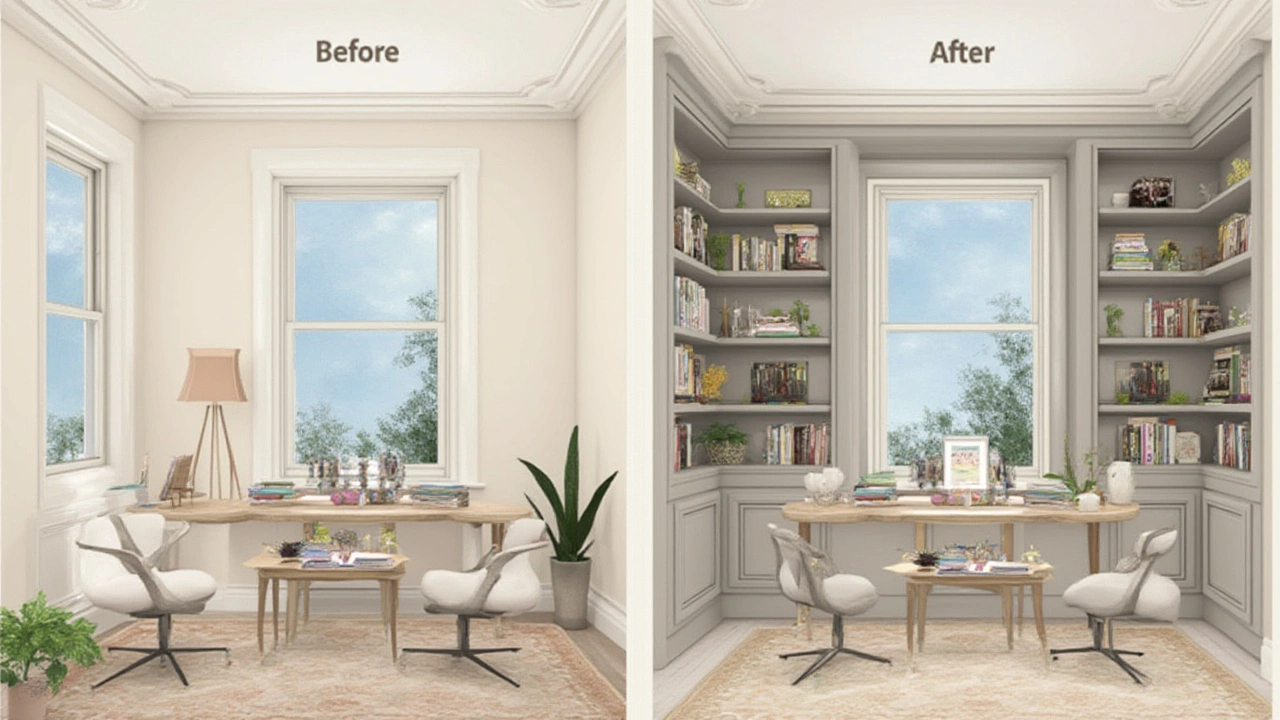
Design, Placement, and Practical Tips
Bookcases sound simple, but putting them in takes a little brainpower. You’ve got choices: should you build floor-to-ceiling wall units, tuck shorter shelves under windows, or flank your fireplace with a set of symmetrical built-ins? Each option changes how a room feels. Taller shelves draw the eye upward, making ceilings look higher. Mixing open shelves with cabinets below can hide clutter while letting you show off your favorite things, which is especially handy if your life is less minimalist and more “organized chaos.”
Placement matters. Built-ins anchor a room—they define zones in open-plan spaces or make a bland living room suddenly feel purpose-built for movie nights and reading marathons. Hallways often go ignored, but even narrow shelves can become clever storage for shoes, hats, or keys. In bedrooms, low units under windows can double as window seats. Try adding a set at the end of a hallway or on either side of a doorway for that library look. Fireplace walls and home offices are classic spots, since people expect to see shelves there and it feels intentional, not forced.
With style, keep it consistent. Matching your bookcase trim and finish to the rest of your house avoids that “add-on” vibe. Painted bookcases are very in right now, especially bold colors like navy, forest green, or even matte black. If you want timeless, crisp white or natural wood nearly always works. Lighting makes a big difference too—installing small LED strips or puck lights under the shelves adds a cozy, museum-like feel and highlights your collection. Since built-ins are permanent, don’t cut corners on work quality. Crooked shelves or cheap materials might save cash now but can cost you when it’s time to sell.
- Measure three times, build once. Shelves out of alignment are frustrating and hard to hide.
- Consider adding electrical outlets inside your shelves. Charging stations for devices are a big plus.
- Adjustable shelving gives future owners more flexibility.
- Skip ornate or heavily themed designs. Clean lines age best and won’t scare off future buyers.
- If you’re adding glass doors, use tempered glass—it’s safer for homes with kids.
- Don’t forget depth. Aim for 11-13 inches so you can store baskets, record albums, or chunky cookbooks.
If you’re not handy, hire a reputable carpenter and scan their reviews and references. You want someone who can match your current trim and paint, so it looks like the bookcase was always there. If you do it yourself, plenty of online tutorials show step-by-step guides, and big box stores now sell customizable shelving kits. Just don’t go overboard—one or two statement built-ins is plenty for most homes. Too many, and it turns from “elegant feature” to “library overkill.”
Potential Drawbacks and Modern Buyer Mindsets
Built-in bookcases have serious perks, but they’re not everyone’s cup of tea. Some buyers want open, flexible spaces and worry built-ins limit how furniture gets arranged. A big wall of shelves usually means a TV or sofa needs to sit elsewhere, which doesn’t always fit everyone’s plans. In smaller spaces, oversized built-ins can make a room feel cramped. If your home is on the tiny side, stick with sleeker, low-profile units or focus on just one accent wall.
There’s also a taste factor. Not every buyer is a collector, reader, or display fan. Vocational experts warn that very quirky or themed built-ins—think wild paint jobs, unusual shapes, or odd placement—can actually make selling harder. Real estate reality TV isn’t lying: agents sometimes tell sellers to remove or neutralize built-ins before listing. Removable shelves or modular systems may be a better bet in rental homes or condos, where tastes change frequently.
If you rent or plan to move soon, less permanent shelving may be smarter. But if this house is your ‘forever home,’ splurge on well-built bookcases that fit your lifestyle. Keep the look flexible so you can change things up as trends shift. In new builds, built-ins help a place stand out from all the near-identical floor plans on the market. If you’re torn, run your idea by a local real estate agent—someone who knows what sells in your neighborhood today, not just five years ago.
Ultimately, built-in bookcases add value in both dollar and ‘wow’ factor to a lot of homes, especially if you plan carefully and focus on quality. They aren’t a one-size-fits-all solution, but when they work, they shine. So if you’re eyeing that empty wall, chances are good that a few rows of shelves could turn it—and maybe your whole home—into something more special, and maybe even a little more valuable too.

